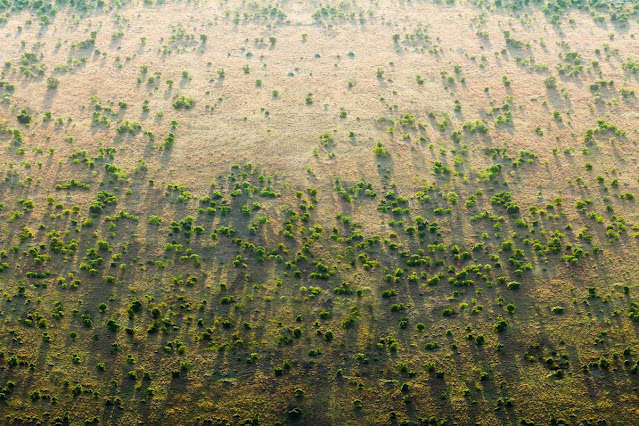When most people hear "NFT," they probably do not think of "sustainability." They might think exactly the opposite, that NFTs increase global warming and speed up the effects of climate change. But these worries are exaggerated mainly.
Yes, NFT technologies do consume some energy. However, it's not near the amounts cited in widely-quoted studies frequently used by those who oppose it. NFTs have led to fascinating initiatives that may help tackle the climate crisis.
More News Visit: The NFT News
Then there's the Kaleidoscope. Metaverse has recently revealed it will join William Kwende's board of directors as the company's Strategic Sustainability Advisor and launch an initiative called the Great NFTrees.
A story of two trees projects
The Great NFTrees project will allow customers to purchase NFTs for trees linked to geo-tagged areas of trees that have been planted on the African continent's Great Green Wall.
If you're not familiar with it, you should know that the Great Green Wall is the largest carbon capture project in the world that aims to plant one trillion trees over the 8,000-kilometer stretch of the continent of Africa. That's right, 1 trillion trees.
The Big NFTrees will be linked to one of the three species found in the Great Green Wall: baobab and acacia, and shea. After purchasing a tree, the collector can showcase their digital assets in their unique Kaloscope metaverse, which Kirk Allen Kaloscope's CEO and founder claims will become an NFT. Because each tree has a geo-tagged location, the collector will know the location of their purchase within the Great Green Wall.
"There is plenty of discussion about NFTs not being viable," Allen lamented in an interview with NFT. "To be capable of tying this all together with a romantic slant which is to possess digital assets or collectibles based on the tree of Africa and then claim that you have collected it and also have a number for you to know the location.
It's an emotional bond; it's tied to something real. I shared this with William and a few of my other friends who are initially from South Africa, and some of them began to cry. It brought them back to their home, the tree they grew up in."
"It brought them back to the place they grew up in, of a tree that they grew up in."
KIRK ALLEN
With Kwende, Allen found the ideal collaborator for this project. Kwende is well-known in the field of sustainability as it created Agritech in 2005. Agritech is a company focused on achieving sustainable development goals through giving farmers training throughout the West African Sahel and supporting local economies.
Kwende has also been involved in a project dubbed the "Zero Carbon Zero Deforestation Shea Valuation Chain" since 2010. It collaborates with global partners to build interconnected ecovillages and supply renewable power, fuel, and other environmental technology for sustainable agriculture in the Kwende region.
And if that's not sufficient, Kwende has also been a leader in his own Great Green Wall initiative in conjunction with the World Economic Forum and the United Nations.
"We consider the Green Wall as an economic opportunity for people in the Sahel and around the world," Kwende explained in an email exchange with NFT. "Our goal is to work with Kaloscope to expand the number of investors who are part of the project.
NFTs are a brand emerging frontier in fintech and offer an endless opportunity for investment growth on the Great Green Wall. Kaloscope has demonstrated leadership over the NFT ecosystem, with a clear determination to do good and do it well.``
Financing the future
In July 2021, Allen talked to Kwende about the potential of The Metaverse and NFTs to help build The Great Green Wall. The conversation resulted in the concept for The Great NFTtrees.
"I was employed in the field of sustainability and one of the most significant things I observed over time is that people are trying to give to specific causes, but there's not any traceability of the donation," explained Allen.
"If you're looking to make a donation to a project for forest sustainability you don't even know whether they actually visited and planted their tree, and they do not know where the tree is. The only thing you receive is an email thanking you as well as a picture of a massive forest that could be taken from a stock picture," he says.
The Kaleidoscope app, in which users can show their metaverse space and buy items, will utilize what Allen refers to as "perkabilities," a portmanteau of "perks" and "utilities." The concept is to give benefits to these virtual assets.
Collectors may be able to access exclusive events, an intimate conversation with William, or any of a variety of other possibilities that the platform has in its pipeline.
Ninety percent of the profits from the Great NFTrees drop that will be made using the Polygon blockchain and will take place in the coming months on a website that is still under development will be used to fund The Great Green Wall project. The remaining 10% will go towards administrative costs. Kaleidoscope will allow collectors to buy the NFTs using various cryptocurrencies.
"We are thrilled to develop this unique space that allows the sustainable planting of millions of trees using Kaloscope," stated Kwende in an announcement. "Personally, I am thrilled to be working with a visionary leader such as Kirck and the team of experts with whom he is surrounded.
Only they could make the digital demands tangible in taking the Great Green Wall project into the realm of metaphysics."
The project is willing to expand the Kaloscope metaverse and possibly the use of carbon credits in the Fantastic NFT Trees.
Currently, carbon markets are somewhat complicated; tracking carbon credits when purchased and sold is only one area where blockchain technology can help with sustainability initiatives.

Comments
Post a Comment